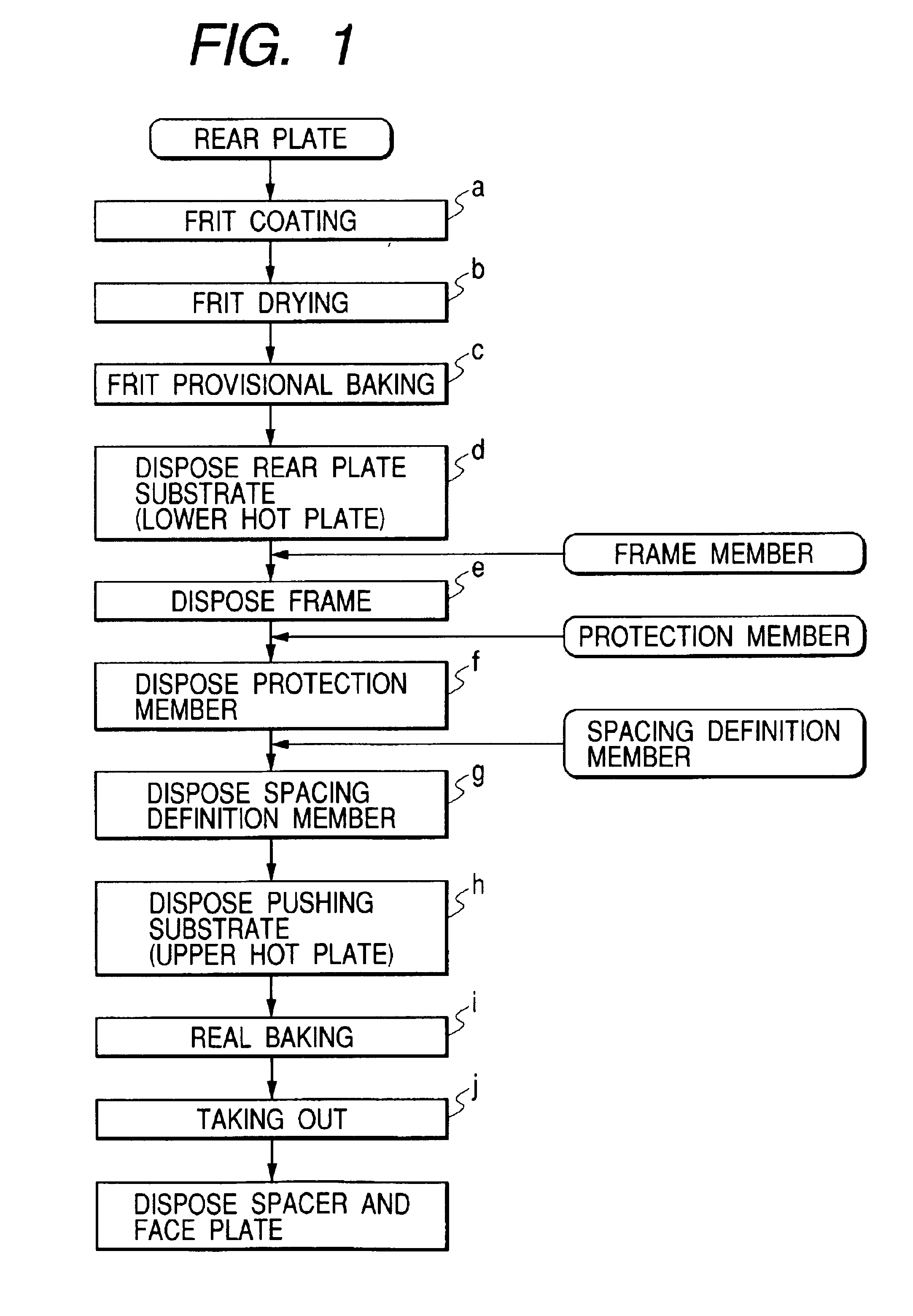Method for fabricating vacuum container and method for fabricating image-forming apparatus using the vacuum container
a vacuum container and image-forming technology, which is applied in the manufacture of electrode systems, discharge tubes with screens, discharge tubes luminescnet screens, etc., can solve the problems of difficult to obtain the functions of the above 1> and 2>, spacer breakage, and jointing temperature rise, so as to avoid unnecessary activation of the getter material and improve the effect of conductan
- Summary
- Abstract
- Description
- Claims
- Application Information
AI Technical Summary
Benefits of technology
Problems solved by technology
Method used
Image
Examples
embodiment 1
[0047]Then, an embodiment of the present invention is described below by referring to the accompanying drawings. However, a schematic configuration of a display unit which is an embodiment of an image-forming apparatus of the present invention is the same as that disclosed in the official gazette of Japanese Patent Application Laid-Open No. 09-82245, its description will be described later but jointing between a substrate, particularly, a rear plate (first substrate) and a frame and jointing between the rear plate and a spacer are mainly described below in detail.
[0048]Therefore, though a bonding step of a frame member when fabricating a display unit is described below by referring to FIGS. 1 to 11, the outline of an assembling system used for a frame jointing step is described below by referring to FIG. 2.
[0049]FIG. 2 is a block diagram of a hot-plate-type assembling system used to assemble a frame member of a display unit which is an embodiment of the present invention, in which s...
embodiment 2
[0103]Then, embodiment 2 of the present invention is described below. In the case of this embodiment, steps from the step h downward in the above first embodiment are different. Therefore, only different steps are described below. The embodiment 2 uses a clip as pressuring means and a baking furnace as baking means. Then, steps from the step h downward of this embodiment are described below.
h. (Clip Fixing Step)
[0104]The spacing definition member 71, frame 51, and rear plate 31 assembled as described above are fixed by clips 92. The clip 92 are uniformly disposed at four sides so that a uniform pressure can be applied to the whole frame 51 (refer to FIG. 16).
[0105]The clip 92 is used to fix the position of the frame 51 and pressurize frit glass (first jointing material) 33 in a heating step to be described later and therefore, it has heat resistance and a desired spring force. Therefore, a material is not restricted as long as the material satisfies the above conditions. A clip made...
PUM
 Login to View More
Login to View More Abstract
Description
Claims
Application Information
 Login to View More
Login to View More - R&D
- Intellectual Property
- Life Sciences
- Materials
- Tech Scout
- Unparalleled Data Quality
- Higher Quality Content
- 60% Fewer Hallucinations
Browse by: Latest US Patents, China's latest patents, Technical Efficacy Thesaurus, Application Domain, Technology Topic, Popular Technical Reports.
© 2025 PatSnap. All rights reserved.Legal|Privacy policy|Modern Slavery Act Transparency Statement|Sitemap|About US| Contact US: help@patsnap.com



